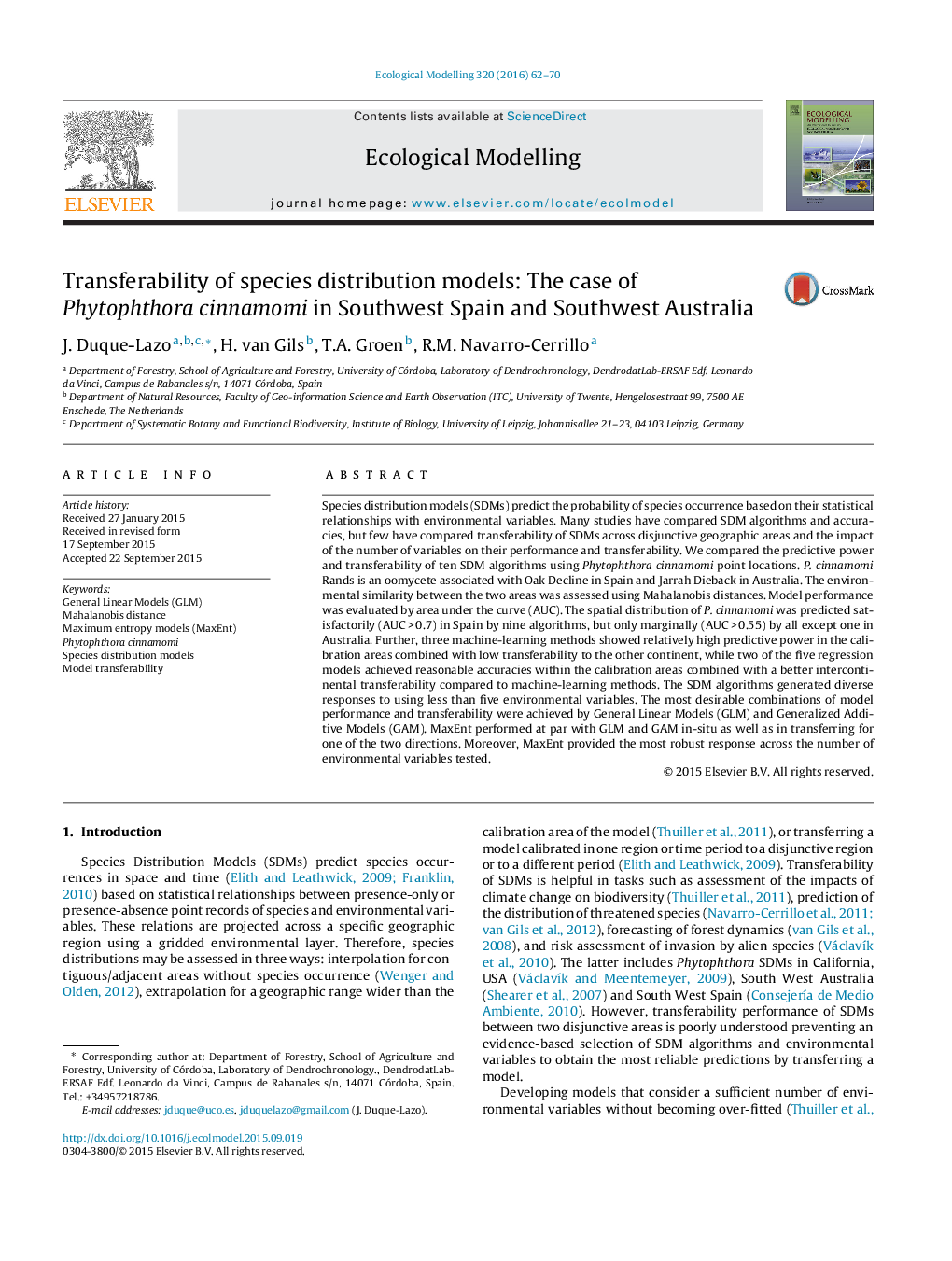| Article ID | Journal | Published Year | Pages | File Type |
|---|---|---|---|---|
| 6296237 | Ecological Modelling | 2016 | 9 Pages |
Abstract
Species distribution models (SDMs) predict the probability of species occurrence based on their statistical relationships with environmental variables. Many studies have compared SDM algorithms and accuracies, but few have compared transferability of SDMs across disjunctive geographic areas and the impact of the number of variables on their performance and transferability. We compared the predictive power and transferability of ten SDM algorithms using Phytophthora cinnamomi point locations. P. cinnamomi Rands is an oomycete associated with Oak Decline in Spain and Jarrah Dieback in Australia. The environmental similarity between the two areas was assessed using Mahalanobis distances. Model performance was evaluated by area under the curve (AUC). The spatial distribution of P. cinnamomi was predicted satisfactorily (AUCÂ >Â 0.7) in Spain by nine algorithms, but only marginally (AUCÂ >Â 0.55) by all except one in Australia. Further, three machine-learning methods showed relatively high predictive power in the calibration areas combined with low transferability to the other continent, while two of the five regression models achieved reasonable accuracies within the calibration areas combined with a better intercontinental transferability compared to machine-learning methods. The SDM algorithms generated diverse responses to using less than five environmental variables. The most desirable combinations of model performance and transferability were achieved by General Linear Models (GLM) and Generalized Additive Models (GAM). MaxEnt performed at par with GLM and GAM in-situ as well as in transferring for one of the two directions. Moreover, MaxEnt provided the most robust response across the number of environmental variables tested.
Related Topics
Life Sciences
Agricultural and Biological Sciences
Ecology, Evolution, Behavior and Systematics
Authors
J. Duque-Lazo, H. van Gils, T.A. Groen, R.M. Navarro-Cerrillo,
